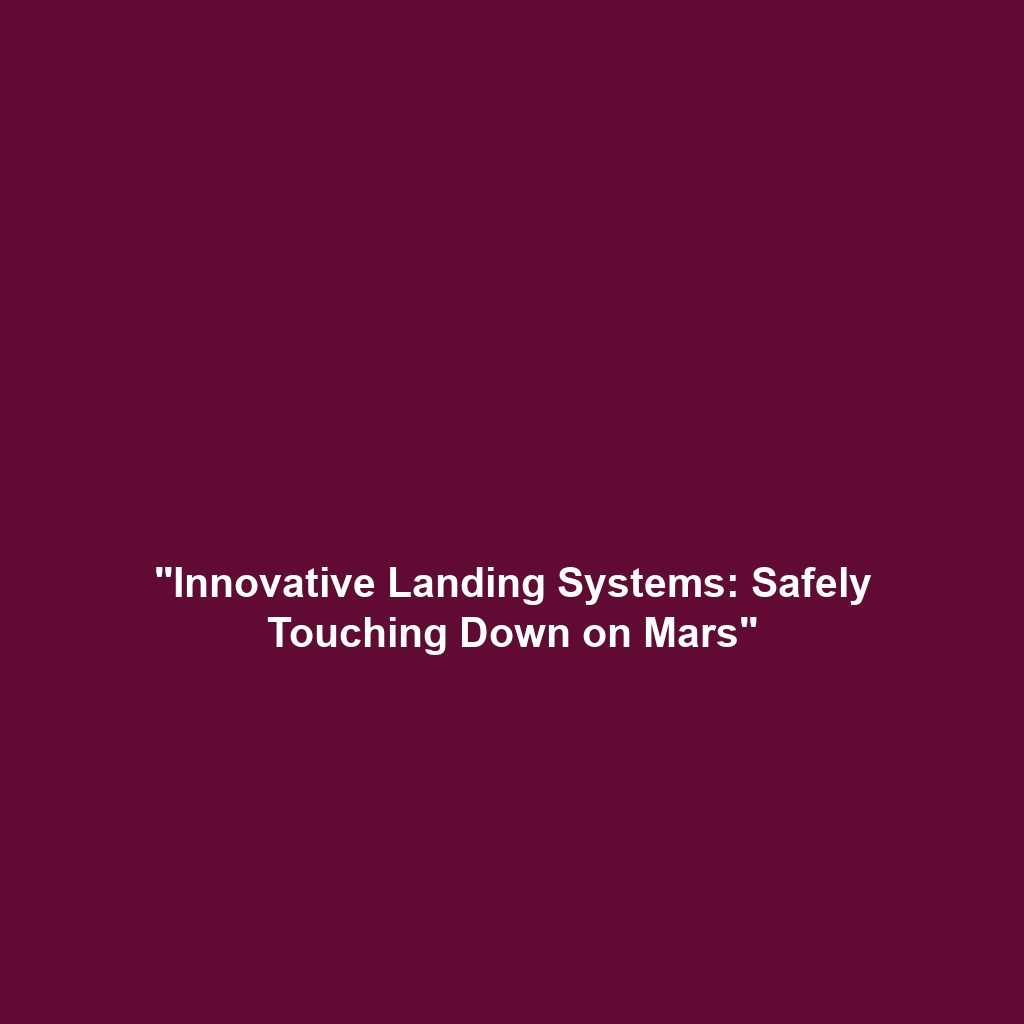Landing Systems for Mars: Technologies for Safely Landing Spacecraft on Mars’ Surface
Introduction
The journey to colonizing Mars is fraught with challenges, not least of which is successfully landing spacecraft on its challenging surface. Landing systems for Mars play a critical role in this endeavor, utilizing advanced technologies to ensure a safe and precise landing. This article delves into the technological innovations that underpin these landing systems, highlighting their significance within the broader context of colonizing Mars.
Key Concepts
Understanding the intricacies of landing systems is essential for any Mars mission. Here are the major concepts:
- Atmospheric Entry Technology: This technology focuses on protecting spacecraft during the intense heat of re-entry.
- Descent and Landing Techniques: Methods such as parachutes, retro-rockets, and sky-crane systems are employed for controlled landings.
- Navigation and Guidance Systems: Accurate tracking systems ensure that spacecraft can navigate Mars’ unpredictable terrain safely.
These principles not only ensure successful missions but also pave the way for human habitation of the Red Planet, making them a crucial component of colonizing Mars.
Applications and Real-World Uses
Landing systems have several applications that are critical to the success of Mars exploration missions. Here’s how these technologies are utilized:
- Curiosity Rover: The sky-crane system was integral for the precise landing of this rover, enabling extensive scientific research.
- Phoenix Lander: Utilized advanced descent techniques to study Martian ice, showcasing the importance of landing technology in critical scientific inquiries.
- Future Manned Missions: Technologies used in current robotic missions will be adapted for human landers, illustrating the evolution of landing systems for colonizing Mars.
Current Challenges
Despite advancements, several challenges persist in perfecting landing systems for Mars:
- Unpredictable Atmospheric Conditions: Variability in the Martian atmosphere complicates descent strategies.
- Terrain Hazards: Rocky and uneven surfaces pose risks for landing accuracy and safety.
- Technological Reliability: Ensuring that landing systems function flawlessly during critical moments is essential but challenging.
Future Research and Innovations
Looking ahead, several innovations are on the horizon that promise to enhance landing systems for Mars:
- Next-Generation Retro-Rockets: These will enable more controlled and efficient landings through improved thrust vectors.
- Advanced AI Navigation: Artificial intelligence may revolutionize real-time navigation and decision-making during descent.
- 3D Terrain Mapping: Enhanced mapping technologies could help spacecraft better assess landing sites and avoid hazards.
Conclusion
Advancements in landing systems for Mars are not merely technical feats; they are foundational technologies crucial for the successful colonization of the Red Planet. The interplay between rigorous research and practical applications highlights the significance of these systems in our quest to establish a human presence on Mars. To learn more about space exploration and technological innovations, explore our other articles on Space Exploration and Mars Colonization.

Leave a Reply